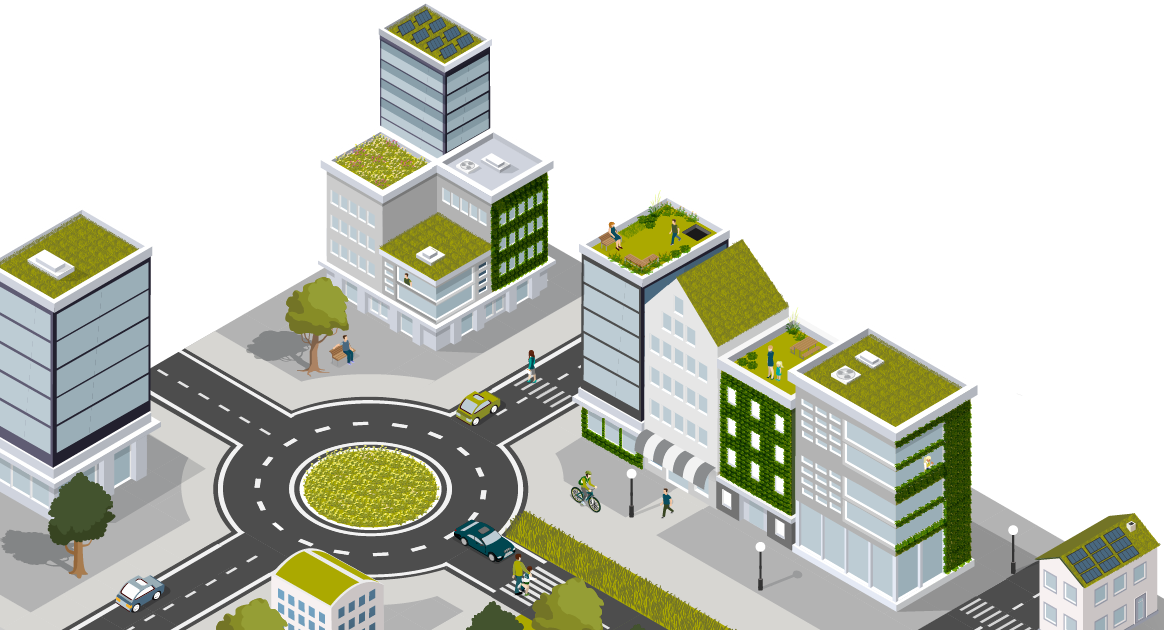Is a green roof sustainable?
As building blocks towards sustainable urban development, more and more green roofs are being realised. A green roof offers many benefits in terms of sustainability, the environment and perceived value. The vegetation converts CO2 into oxygen and filters particulate matter from the air. This is better for the climate and for health. In urban areas in particular, green roofs can significantly improve air quality.
Green roofs as sustainable solution
Green roofs also contribute to the sustainability of a building. A green roof significantly reduces the need for air conditioning in summer and provides insulation in the winter. The insulation in the winter will depend on the amount of moisture in the various layers. Insulation in the summer is the greatest, because the layers are dry and therefore reflect the heat effectively. Due to the reduced need for air conditioning in the summer and less heating in the winter, a green roof significantly reduces energy consumption.
A green roof also extends the life span of your roof, because it shields the roofing material from the harmful influence of sun, wind and rain. Research has shown that roof surfaces last two to three times longer if a green roof is installed. What's more, the roof has a water buffering function, because it holds the excess water from heavy rainfall and releases this gradually to the sewage system. This prevents flooding and ensures a lower ambient temperature through evaporation. In addition, a green roof provides scope for biodiversity to develop. There are shelters and nesting sites for birds, bees, butterflies and other insects.
Sustainable future
So with a green roof we are contributing to a sustainable city, not only for our generation but for the generations to come.

